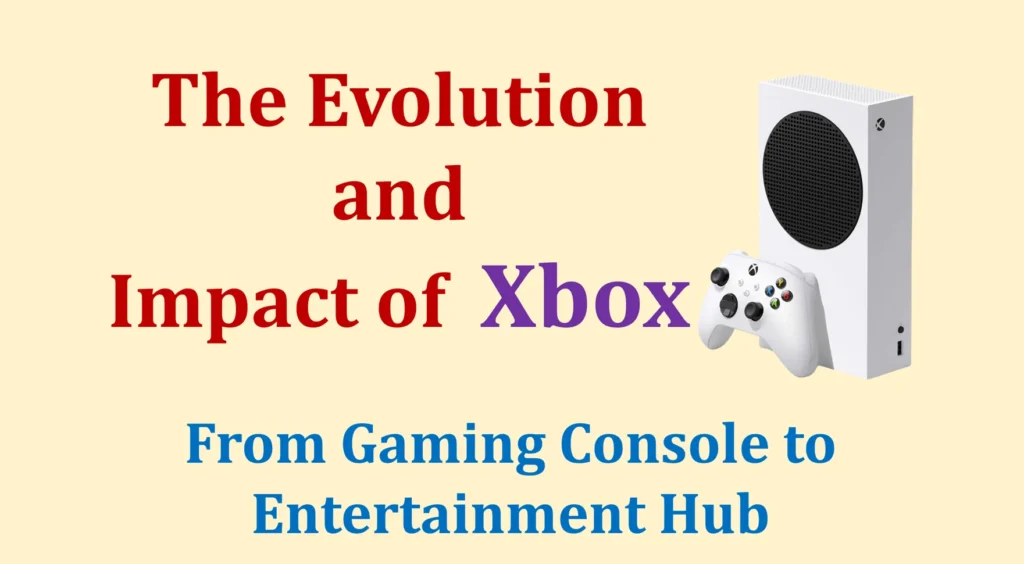
Introduction
Since its inception in 2001, Xbox has carved out a significant place in the gaming industry, becoming one of the most influential and beloved gaming consoles worldwide. Developed by Microsoft, the Xbox series has not only revolutionized gaming but also transformed home entertainment, establishing a robust ecosystem that blends gaming, multimedia, and social interaction.
Brief Overview of Xbox’s Significance in the Gaming Industry
It’s entry into the gaming world marked a pivotal moment, challenging the dominance of established players like Sony and Nintendo. With innovative hardware, exclusive titles, and a commitment to pushing technological boundaries, it quickly gained a loyal fan base. The introduction of Xbox Live in 2002 set a new standard for online multiplayer gaming, creating a vibrant community of gamers and setting the stage for the future of online gaming. Over the years, it has continued to innovate with each new console generation, enhancing graphics, performance, and user experience.
The Birth of Xbox
The creation of it marks a significant chapter in the history of gaming, driven by a vision to revolutionize the gaming experience and establish a foothold in a market dominated by industry giants like Sony and Nintendo. This section explores the origins, initial reception, and key figures behind the inception of it.
Origins and Inspiration Behind the Creation of Xbox
In the late 1990s, Microsoft recognized the growing potential of the video game industry and the increasing convergence of gaming and home entertainment. The company sought to expand its influence beyond personal computers and into the living rooms of consumers worldwide. The inspiration for it stemmed from the desire to create a powerful gaming console that would seamlessly integrate with Windows-based PCs, leveraging Microsoft’s software expertise to offer an unparalleled gaming experience.
The project, initially codenamed “DirectX Box,” aimed to utilize DirectX technology to enhance game graphics and performance. This vision was to create a console that would not only rival existing platforms but also push the boundaries of what was possible in gaming.
Initial Release and Reception
The original Xbox was unveiled to the public on November 15, 2001. With its sleek black design and the iconic green “X” logo, it made a bold statement. The launch was accompanied by a robust lineup of games, most notably “Halo: Combat Evolved,” which would go on to become a flagship franchise for the brand.
The initial reception of the it was mixed. While the console was praised for its powerful hardware, superior graphics, and the groundbreaking online multiplayer service, Xbox Live, it faced skepticism from industry analysts and competition from the well-established PlayStation 2 and Nintendo GameCube. However, the innovative features and strong game library quickly won over gamers, leading to impressive sales figures and establishing it as a serious contender in the console market.
Key Figures Involved in Its Development
The development of it was spearheaded by a team of visionary engineers and executives at Microsoft. Key figures included:

- Seamus Blackley: Often referred to as the “father of Xbox,” Blackley was instrumental in conceptualizing and pitching the idea to Microsoft’s leadership. His background in physics and game development provided the technical foundation for the project.
- J Allard: As a pivotal figure in the development and marketing of it, Allard played a crucial role in shaping the console’s design and user experience. His vision for its Live set the stage for the future of online gaming.

- Ed Fries: A key executive in Microsoft’s gaming division, Fries was responsible for securing crucial game development partnerships and overseeing the creation of exclusive titles that would define the Xbox brand.
- Robbie Bach: As the head of Microsoft’s Entertainment and Devices Division, Bach provided the strategic direction and leadership needed to bring this project to fruition. His efforts were vital in navigating the competitive landscape and driving the console’s success.
Together, these individuals and their teams overcame numerous challenges and skepticism to launch a product that would forever change the gaming industry. The birth of it marked the beginning of a new era in gaming, setting the stage for future innovations and solidifying Microsoft’s position as a major player in the entertainment world.
Generations of Xbox Consoles
This brand has evolved significantly over the years, with each generation introducing new features, technological advancements, and memorable gaming experiences. This section explores the major milestones and key innovations of each Xbox console generation.
Xbox (2001)
Features and Specifications
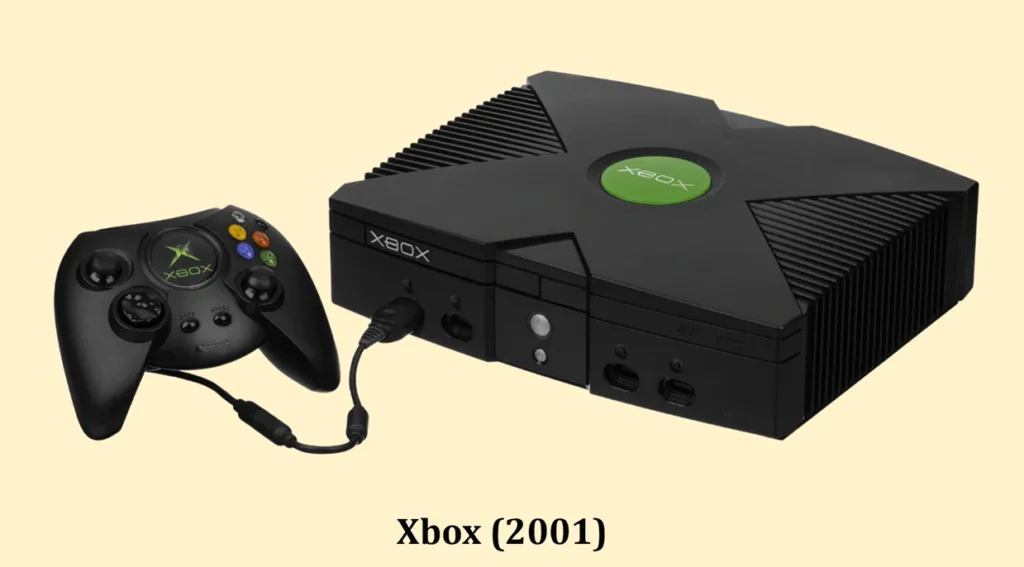
The original Xbox, launched in 2001, marked Microsoft’s first foray into the gaming console market. Boasting a 733 MHz Intel Pentium III processor, 64 MB of RAM, and a custom-built NVIDIA graphics card, the Xbox was designed to deliver powerful performance and stunning graphics. It also featured an internal hard drive, a first for gaming consoles at the time, allowing for faster loading times and the ability to save games directly on the console. The inclusion of four controller ports facilitated local multiplayer gaming, enhancing its appeal.
Notable Games and Milestones
It was launched with a strong lineup of games, but none were more impactful than “Halo: Combat Evolved.” This first-person shooter quickly became a cultural phenomenon, establishing itself as one of the most influential games of all time. Other notable titles included “Fable,” “Forza Motorsport,” and “Ninja Gaiden,” which showcased the console’s diverse gaming library. By the end of its lifecycle, the original it had sold over 24 million units worldwide, solidifying Microsoft’s presence in the gaming industry.
Xbox 360 (2005)
Introduction of Xbox Live and Online Multiplayer
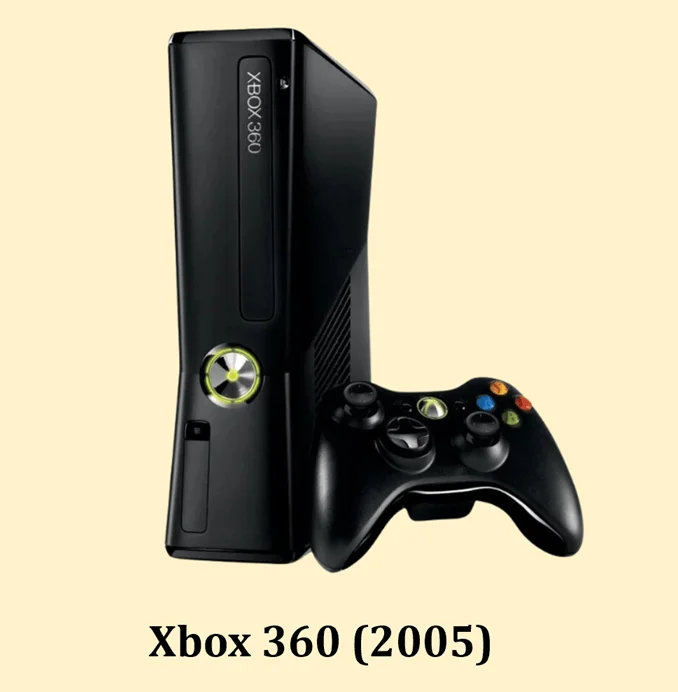
The Xbox 360, released in 2005, took online gaming to new heights with the introduction of Xbox Live. This online service allowed players to connect, compete, and collaborate with others worldwide. With features like a robust friends list, voice chat, and downloadable content, Xbox Live redefined the gaming experience and became a cornerstone of the this ecosystem.
Popular Games and Exclusive Titles
The Xbox 360 boasted an impressive library of games, with exclusives such as “Gears of War,” “Halo 3,” “Mass Effect,” and “Fable II” captivating gamers. These titles not only pushed the boundaries of storytelling and graphics but also fostered a vibrant online community. The console also supported popular third-party games like “Call of Duty” and “Grand Theft Auto,” broadening its appeal.
Hardware Improvements and Innovations
The Xbox 360 featured a custom triple-core IBM processor, 512 MB of RAM, and an ATI graphics card, delivering significant performance improvements over its predecessor. The console also introduced wireless controllers, an HDMI output, and multiple storage options, enhancing user convenience and gameplay experience. Despite facing initial hardware issues, such as the infamous “Red Ring of Death,” Microsoft’s commitment to addressing these problems helped maintain the console’s popularity, leading to over 84 million units sold globally.
Xbox One (2013)
Integration of Entertainment and Multimedia Capabilities
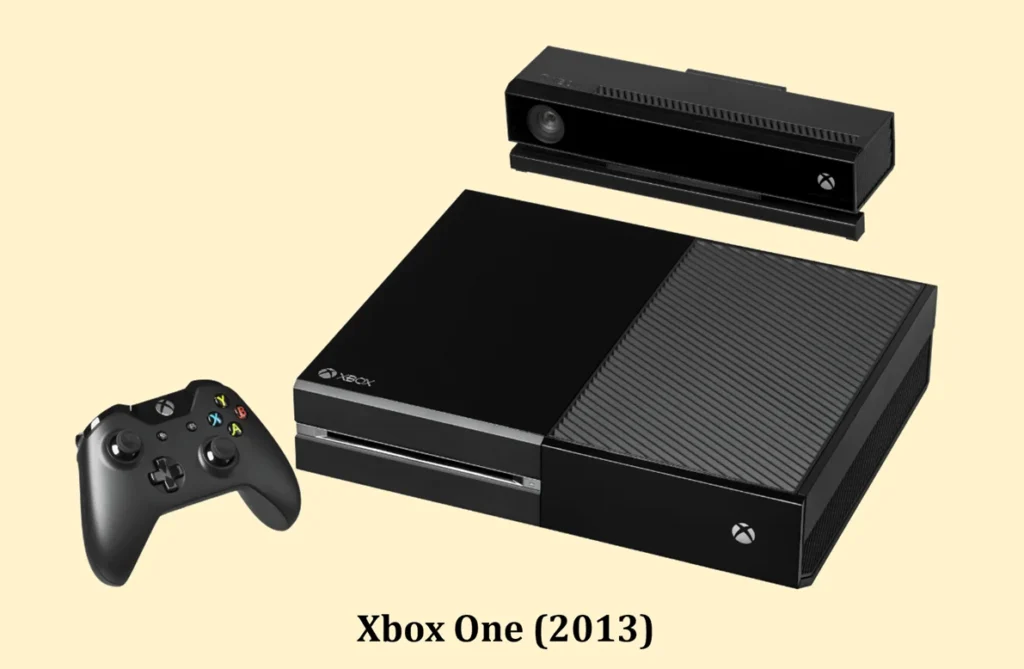
The Xbox One, released in 2013, was designed as an all-in-one entertainment system, integrating gaming, television, streaming services, and more. With features like HDMI pass-through, users could connect their cable or satellite boxes directly to the console, allowing seamless switching between gaming and TV.
Backward Compatibility and Game Library
One of the standout features of the Xbox One was its backward compatibility, allowing players to enjoy a wide range of Xbox 360 and original Xbox games. This expanded game library, coupled with the release of critically acclaimed exclusives like “Forza Horizon,” “Sunset Overdrive,” and “Halo 5: Guardians,” provided gamers with a rich and varied gaming experience.
Introduction of Kinect and Its Impact
The Xbox One initially launched with Kinect, a motion-sensing input device that allowed for voice and gesture controls. While the Kinect offered unique gameplay experiences and enhanced the console’s multimedia capabilities, it struggled to gain widespread adoption among gamers. Eventually, Microsoft shifted its focus away from Kinect, emphasizing core gaming experiences and performance enhancements.
Xbox Series X/S (2020)
Enhanced Performance and Graphics
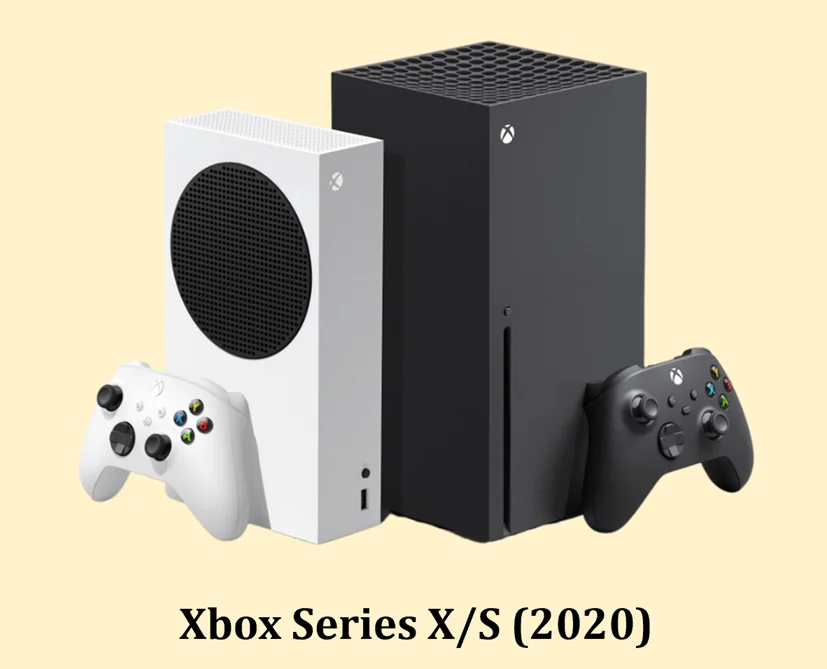
The Xbox Series X and Series S, released in 2020, represent the latest and most advanced generation of its consoles. The Series X, with its 3.8 GHz custom AMD Zen 2 processor, 12 teraflops of GPU power, and 16 GB of GDDR6 RAM, delivers unprecedented performance and graphics. The Series S, while less powerful, offers a more affordable option with a custom 3.6 GHz AMD Zen 2 processor, 4 teraflops of GPU power, and 10 GB of GDDR6 RAM, catering to different segments of the gaming market.
New Features and Technological Advancements
Both consoles feature SSD storage, drastically reducing loading times and enhancing overall performance. The introduction of Quick Resume allows players to switch between multiple games seamlessly, while support for ray tracing and 4K resolution provides stunning visual fidelity. The Series X/S also emphasizes backward compatibility, enabling gamers to enjoy titles from all its previous generations with improved performance and graphics.
A Comparative Analysis of Series S and X
The Series X is designed for gamers seeking the highest level of performance and graphical fidelity, supporting 4K gaming at up to 120 frames per second. The Series S, on the other hand, targets a more budget-conscious audience, offering 1440p resolution gaming at up to 120 frames per second. Both consoles share many core features, including support for Xbox Game Pass, Xbox Live, and backward compatibility, ensuring a comprehensive gaming experience regardless of the chosen model.
The Xbox Ecosystem
This ecosystem extends beyond the physical consoles, offering a comprehensive suite of services that enhance the gaming experience. This ecosystem includes Xbox Live, Xbox Game Pass, and Xbox Cloud Gaming (Project xCloud), each contributing to the accessibility and enjoyment of games.
Xbox Live and Xbox Game Pass
Benefits and Subscription Models
- Xbox Live: Introduced in 2002, Xbox Live revolutionized online gaming by providing a robust platform for multiplayer gaming, digital content distribution, and social interaction. Xbox Live Gold, the premium subscription service, offers several benefits, including:
- Multiplayer Gaming: Access to online multiplayer modes for a wide range of games.
- Free Games: Monthly free game downloads through the Games with Gold program.
- Exclusive Discounts: Special discounts on digital games and content.
- Xbox Game Pass: Launched in 2017, Xbox Game Pass is a subscription service that offers access to a vast library of games for a monthly fee. There are three main tiers:
- Game Pass Console: Access to a curated library of console games.
- Game Pass PC: Access to a library of PC games.
- Game Pass Ultimate: Combines both Console and PC libraries, includes Xbox Live Gold, and offers additional perks such as access to Xbox Cloud Gaming.
Impact on Gaming and Game Accessibility
Xbox Live and Xbox Game Pass have significantly impacted the gaming industry:
- Accessibility: Game Pass makes gaming more accessible by offering a vast library of games for a fixed monthly fee, reducing the financial barrier for gamers. This model allows players to explore and enjoy a wide range of titles without the need for individual purchases.
- Community Building: Xbox Live fosters a global community of gamers, enabling them to connect, compete, and collaborate regardless of geographical location. Features like clubs, groups, and messaging enhance social interaction within the gaming community.
- Developer Opportunities: Game Pass provides a platform for indie developers and smaller studios to reach a broader audience. By including their games in the subscription service, developers gain visibility and player engagement, often leading to increased sales and recognition.
Xbox Cloud Gaming (Project xCloud)
Overview and Capabilities
Xbox Cloud Gaming, also known as Project xCloud, is Microsoft’s cloud gaming service that allows users to stream and play games directly from the cloud on various devices, including smartphones, tablets, and PCs. Launched in beta in 2019 and integrated into Xbox Game Pass Ultimate in 2020, xCloud offers the following capabilities:
- Device Flexibility: Play Xbox games on non-console devices, providing the flexibility to game anywhere with an internet connection.
- Instant Access: Stream games without the need for lengthy downloads or installations, offering instant access to a wide range of titles.
- Cross-Platform Progress: Seamless integration with Xbox Live ensures that game progress, achievements, and saves are synchronized across devices.
Cloud Gaming’s Future and Its Consequences
The future of cloud gaming, as exemplified by Xbox Cloud Gaming, holds significant implications for the gaming industry:
- Increased Accessibility: Cloud gaming lowers the barrier to entry for gaming by eliminating the need for expensive hardware. Players can access high-quality gaming experiences on affordable devices, broadening the gaming audience.
- Gaming on the Go: The ability to play high-fidelity games on mobile devices enhances the portability of gaming, allowing players to enjoy their favorite titles wherever they are.
- Evolving Business Models: Cloud gaming may lead to new business models and revenue streams for developers and publishers, such as subscription-based services and episodic content delivery.
- Technological Advancements: As internet infrastructure improves, the latency and performance of cloud gaming will continue to enhance, offering experiences that rival traditional console gaming.
- Environmental Impact: Cloud gaming could potentially reduce the environmental footprint of gaming by diminishing the need for physical media and hardware manufacturing.
Impact on the Gaming Industry
It has left an indelible mark on the gaming industry, influencing game development and publishing practices, contributing to the growth of esports and online communities, and actively promoting diversity and inclusion. This section delves into these aspects, highlighting its significant impact.
Influence on Game Development and Publishing
It’s influence on game development and publishing has been profound, driving innovation and shaping industry standards:
- Technological Advancements: With each new generation of consoles, it has introduced powerful hardware and advanced software tools that have pushed the boundaries of what is possible in gaming. This has led to the creation of more immersive, graphically stunning, and complex games.
- Support for Indie Developers: It has championed indie game development through initiatives like [email protected], providing independent developers with the tools, resources, and platform to bring their games to a global audience. This support has resulted in a diverse array of unique and creative games that might not have been possible otherwise.
- Game Pass Model: Xbox Game Pass has revolutionized the way games are distributed and consumed. By offering a subscription-based model, it has provided a sustainable revenue stream for developers and expanded the reach of their games. This model encourages players to try a wider variety of games, increasing exposure for developers and fostering a more vibrant gaming ecosystem.
Contribution to the Growth of Esports and Online Communities
It has played a pivotal role in the growth of esports and the development of thriving online communities:
- Competitive Gaming: Xbox Live’s robust online infrastructure has been instrumental in the rise of competitive gaming. Games like “Halo,” “Gears of War,” and “Forza Motorsport” have become staples in the esports scene, drawing large audiences and fostering competitive communities.
- Community Building: Xbox Live has facilitated the formation of online communities where players can connect, communicate, and collaborate. Features such as clubs, groups, and in-game messaging have created a sense of camaraderie and belonging among gamers.
- Esports Events and Tournaments: It has hosted and supported numerous esports events and tournaments, providing platforms for amateur and professional gamers to showcase their skills. These events have helped legitimize esports as a mainstream form of entertainment and competition.
Xbox’s Role in Promoting Diversity and Inclusion in Gaming
It has been at the forefront of promoting diversity and inclusion within the gaming industry, recognizing the importance of representation and equality:
- Inclusive Gaming Experiences: It has made significant strides in creating inclusive gaming experiences through features like the Xbox Adaptive Controller, designed for gamers with disabilities. This commitment to accessibility ensures that gaming is more inclusive and enjoyable for everyone.
- Diverse Game Content: It supports and promotes games that feature diverse characters and narratives, reflecting a wide range of experiences and backgrounds. By doing so, it encourages greater representation in games, allowing players to see themselves reflected in the media they consume.
- Industry Initiatives: It has launched and supported various initiatives aimed at promoting diversity and inclusion within the industry. Programs such as [email protected] and partnerships with organizations like Black Girls CODE and Girls Who Code aim to empower underrepresented groups and foster a more inclusive gaming community.
- Workplace Diversity: Microsoft, the parent company of Xbox, is committed to fostering a diverse and inclusive workplace. This commitment extends to it, where efforts are made to ensure diversity in hiring, leadership, and company culture, setting an example for the broader industry.
Xbox and the Future of Gaming
Upcoming Releases and Projects
It continues to push the boundaries of gaming with an exciting lineup of upcoming releases and projects. Key highlights include:
- New Game Titles: Anticipated games such as “Fable,” “Everwild,” and “Avowed” promise to deliver rich storytelling, immersive worlds, and cutting-edge graphics. These titles, developed by renowned studios like Playground Games, Rare, and Obsidian Entertainment, reflect its commitment to high-quality gaming experiences.
- Expansions and Sequels: Fans can look forward to expansions and sequels of beloved franchises like “Halo Infinite,” “Forza Motorsport,” and “Senua’s Saga: Hellblade II.” These games aim to build upon their predecessors’ successes while introducing new features and gameplay mechanics.
- Innovative Projects: It is investing in innovative projects like “Project Mara,” an experimental game exploring mental health, and “Contraband,” a co-op smuggler’s paradise set in the 1970s. These projects highlight it’s willingness to explore diverse genres and themes.
Microsoft’s Outlook for Xbox’s Future
Microsoft envisions a future where it is not just a gaming console but a comprehensive platform for interactive entertainment:
- Cross-Platform Ecosystem: Microsoft’s vision includes creating a seamless cross-platform ecosystem where players can enjoy their games on consoles, PCs, and mobile devices through services like Xbox Cloud Gaming. This approach aims to break down barriers and make gaming accessible to a broader audience.
- Game Pass Expansion: Its Game Pass will continue to be a cornerstone of Microsoft’s strategy, with plans to expand its library, introduce new content partnerships, and enhance the overall value for subscribers. The goal is to make Game Pass the ultimate destination for gamers.
- Technological Innovation: Microsoft is committed to leveraging cutting-edge technology to enhance gaming experiences. This includes advancements in cloud computing, AI, and virtual reality, which will enable more immersive and dynamic gameplay.
Potential Challenges and Opportunities in the Gaming Industry
As it looks to the future, it faces several challenges and opportunities:
- Market Competition: The gaming industry is highly competitive, with major players like Sony and Nintendo continually innovating. It must maintain its competitive edge through unique offerings and strategic partnerships.
- Technological Barriers: The success of cloud gaming hinges on the availability of robust internet infrastructure. Ensuring low latency and high-quality streaming across different regions will be crucial.
- Diversity and Inclusion: The industry must continue to address issues of diversity and inclusion. It has the opportunity to lead by example, fostering a more inclusive gaming community and supporting diverse voices in game development.
- Sustainability: As environmental concerns grow, it can explore sustainable practices in hardware production, packaging, and digital distribution to reduce its ecological footprint.
Conclusion & FAQs
From its inception in 2001, it has revolutionized the gaming industry with groundbreaking hardware, innovative online services, and a commitment to high-quality gaming experiences. The original Xbox introduced powerful performance and iconic titles, while the Xbox 360 redefined online gaming. The Xbox One integrated entertainment and multimedia capabilities, and the Xbox Series X/S set new standards for performance and graphics. This ecosystem, with services like Xbox Live, Xbox Game Pass, and Xbox Cloud Gaming, has expanded gaming accessibility and fostered vibrant online communities.
Reflecting on its journey, it’s clear that the brand has continuously evolved to meet the changing demands of gamers. Looking ahead, I predict that it will further integrate cloud gaming and cross-platform play, making high-quality gaming experiences accessible to an even wider audience. The expansion of Game Pass will likely continue to disrupt traditional game distribution models, and it’s focus on diversity and inclusion will pave the way for more representative and innovative games.
Frequently Asked Questions (FAQs)
What was the inspiration behind the creation of the original Xbox?
The original Xbox was inspired by Microsoft’s desire to expand its influence beyond personal computers and into the home entertainment market. The aim was to create a powerful gaming console that would integrate seamlessly with Windows-based PCs and push the boundaries of gaming technology.
How did Xbox Live revolutionize online gaming?
Xbox Live, introduced with the original Xbox, set a new standard for online multiplayer gaming. It provided a robust platform for players to connect, compete, and collaborate globally, with features such as a friends list, voice chat, and downloadable content, creating a vibrant online gaming community.
What are the main features of Xbox Game Pass?
Xbox Game Pass is a subscription service offering access to a vast library of games for a monthly fee. It has three main tiers: Game Pass Console, Game Pass PC, and Game Pass Ultimate, which includes both libraries and additional perks like Xbox Live Gold and access to Xbox Cloud Gaming.
How does Xbox support indie game developers?
It supports indie game developers through initiatives like [email protected], which provides independent developers with the tools, resources, and platform to bring their games to a global audience. This program has led to a diverse range of unique and creative games being published on its platforms.
What is Xbox Cloud Gaming (Project xCloud) and how does it work?
Xbox Cloud Gaming, also known as Project xCloud, is a cloud gaming service that allows users to stream and play games directly from the cloud on various devices, such as smartphones, tablets, and PCs. It offers instant access to a wide range of titles without the need for lengthy downloads or installations, enabling gaming on the go.
How has Xbox contributed to the growth of esports?
Xbox has significantly contributed to the growth of esports by providing a robust online infrastructure through Xbox Live, hosting and supporting numerous esports events and tournaments, and fostering competitive communities around games like “Halo,” “Gears of War,” and “Forza Motorsport.”
What efforts has Xbox made to promote diversity and inclusion in gaming?
It has promoted diversity and inclusion by creating inclusive gaming experiences, supporting diverse game content, launching initiatives aimed at empowering underrepresented groups, and fostering a diverse and inclusive workplace. This includes the development of the Xbox Adaptive Controller and partnerships with organizations like Black Girls CODE.
What are some anticipated upcoming releases for Xbox?
Some anticipated upcoming releases for Xbox include “Fable,” “Everwild,” “Avowed,” “Halo Infinite,” “Forza Motorsport,” and “Senua’s Saga: Hellblade II.” These titles promise to deliver rich storytelling, immersive worlds, and cutting-edge graphics.
What challenges does Xbox face in the future of gaming?
It faces challenges such as maintaining its competitive edge in a highly competitive market, ensuring robust internet infrastructure for cloud gaming, addressing issues of diversity and inclusion, and exploring sustainable practices to reduce its ecological footprint.
How can readers engage with the Xbox community and share their experiences?
Readers can engage with the Xbox community by sharing their favorite Xbox memories, games, and thoughts on the future of Xbox in the comments section of the blog post. This encourages a vibrant discussion and celebration of the past, present, and future of Xbox.
